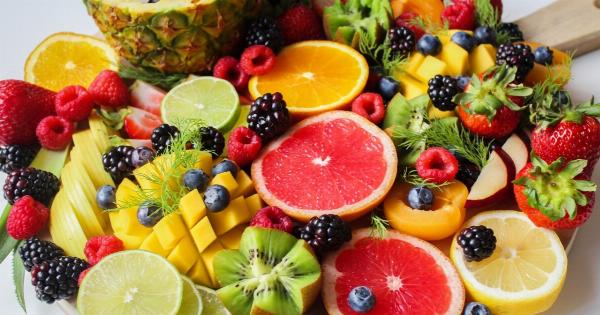Do you find yourself overeating and struggling to control your diet? If so, you’re not alone. Many people struggle with overeating, and it’s a problem that can lead to obesity, diabetes, heart disease, and other health concerns.
Fortunately, there is a simple solution that can help you overcome the urge to overeat: fruits and vegetables.
What Are Fruits and Vegetables?
Fruits and vegetables are plant-based foods that are rich in vitamins, minerals, fiber, and other nutrients. They come in many different varieties, including:.
- Berries
- Leafy Greens
- Citrus Fruits
- Root Vegetables
- Cruciferous Vegetables
- Tropical Fruits
Why Are Fruits and Vegetables So Important?
Fruits and vegetables are important for a number of reasons. First, they’re low in calories and high in fiber, which means they can help you feel full without consuming too many calories. This can be especially helpful if you’re trying to lose weight.
Second, fruits and vegetables are packed with vitamins and minerals that are essential for good health. For example, leafy greens like spinach and kale are rich in vitamin K, which helps maintain strong bones.
Citrus fruits like oranges and grapefruits are high in vitamin C, which supports a healthy immune system.
Finally, fruits and vegetables are a good source of antioxidants, which protect your body against damage from free radicals.
Free radicals are unstable molecules that can cause cellular damage and contribute to the development of chronic diseases like cancer and heart disease.
How Can Fruits and Vegetables Help You Overcome Overeating?
One of the main reasons people overeat is because they don’t feel satisfied after a meal. This can happen if you eat foods that are high in calories but low in nutrients, such as junk food and processed foods.
These foods can stimulate your appetite, making you want to eat more even after you’ve consumed a large amount of calories.
Fruits and vegetables, on the other hand, are low in calories but high in nutrients. This means they can help you feel full and satisfied without consuming too many calories.
For example, a cup of cooked broccoli contains just 55 calories but is high in fiber and protein, making it a filling and nutritious food choice.
In addition, fruits and vegetables can help reduce cravings for unhealthy foods. When you eat a diet that’s high in fruits and vegetables, your body gets used to consuming nutrient-dense foods and starts to crave them.
This can help reduce your desire for processed and unhealthy foods.
How Can You Incorporate More Fruits and Vegetables into Your Diet?
If you’re not used to eating a lot of fruits and vegetables, it can be difficult to know where to start. Here are some tips to help you incorporate more fruits and vegetables into your diet:.
- Start with one serving per meal. Aim to eat at least one serving of fruits or vegetables with every meal. This can be as simple as adding a handful of spinach to your morning smoothie or munching on a handful of carrots as a snack.
- Try new recipes. Experiment with different ways to prepare fruits and vegetables to discover new flavors and textures. Roasting, grilling, and sautéing are all great ways to bring out the natural sweetness and flavor of fruits and vegetables.
- Make fruits and vegetables the star of the show. Instead of thinking of fruits and vegetables as a side dish, make them the main event. For example, a big salad with lots of veggies can make a filling and satisfying meal.
- Get creative with your snacks. Instead of reaching for a bag of chips, try snacking on fruit or vegetables. Cut up some cucumber or bell pepper sticks and dip them in hummus, or try spreading almond butter on apple slices.
The Bottom Line
Fruits and vegetables are a simple but powerful tool in the fight against overeating.
By incorporating more nutrient-dense foods into your diet, you can help reduce cravings, feel more satisfied after meals, and support your overall health and well-being.


























